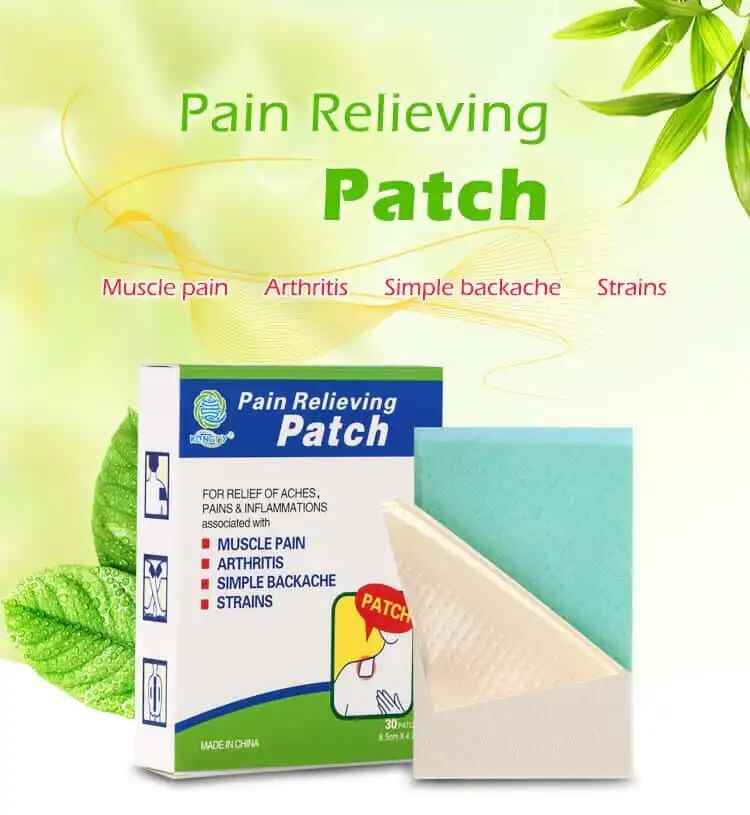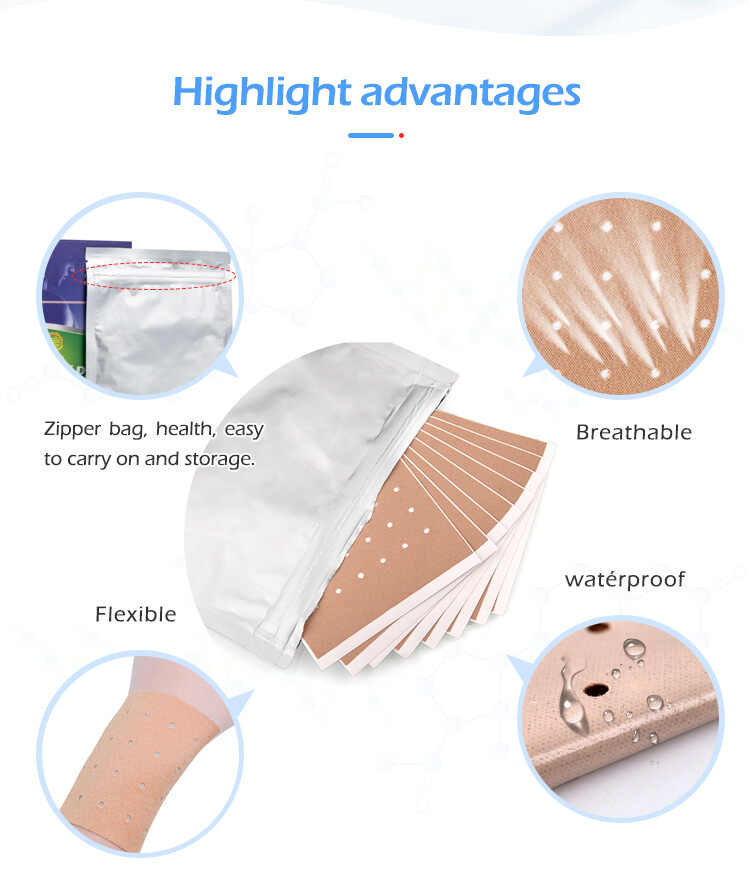Why is Quality Control Essential in Heat Therapy Patch OEM Production?
Quality control (QC) is a vital aspect of any manufacturing process, especially when it comes to producing health-related products like Heat Therapy Patches. Whether you're working with a Heat Therapy Patch Manufacturer, a Heat Therapy Patch OEM, or offering a Custom Heat Therapy Patch under a Private Label Heat Therapy Patch brand, ensuring high-quality standards is paramount. A robust quality control process guarantees that the patches are safe, effective, and consistent, protecting both the consumer and the brand's reputation. This article will dive into why quality control is so critical in the production of Heat Therapy Patches and how it impacts manufacturers, suppliers, and ultimately, end users.

1. Ensuring Safety and Compliance
The foremost reason why quality control is essential in Heat Therapy Patch OEM production is to ensure that the product is safe for use. Heat therapy patches are directly applied to the skin, meaning that any contaminants, allergens, or improper formulations can lead to skin irritation, burns, or even more serious health risks.
For Heat Therapy Patch Manufacturers and Heat Therapy Patch Suppliers, adhering to rigorous QC standards is crucial to ensure compliance with regulatory bodies like the FDA or European Medicines Agency (EMA). Quality checks must be conducted at multiple stages—during raw material sourcing, manufacturing, and post-production—to confirm that the patches meet safety standards.
Without proper QC, there is a risk of defects that could endanger consumers and expose the brand to legal liabilities and costly recalls. It’s essential to select a Heat Therapy Patch OEM that adheres to these safety protocols and maintains up-to-date certifications for regulatory compliance.
2. Consistency in Product Performance
Consumers expect the same level of relief from every heat therapy patch, which makes consistency in performance a critical factor in the success of your brand. Whether the heat therapy patch provides long-lasting warmth, conforms well to the skin, or delivers the right level of heat, consistency in these factors is key to customer satisfaction.
When partnering with a Custom Heat Therapy Patch supplier, it is important that quality control ensures uniform distribution of ingredients, such as menthol or capsaicin, which contribute to the effectiveness of the patch. Additionally, the adhesive quality, the heat release mechanism, and the patch's flexibility are all factors that must be tested to guarantee consistent performance.
Quality control should involve a series of rigorous tests during production, including:
Thermal performance tests to ensure the patches release the right amount of heat over the intended time.
Adhesion tests to confirm that the patch stays securely in place during use without damaging the skin.
Ingredient analysis to ensure that each batch of patches contains the correct dosage and consistency of active ingredients.
3. Building Trust and Brand Reputation
For any Private Label Heat Therapy Patch, the success of the product relies heavily on the trust consumers place in the brand. When consumers use heat therapy patches, they expect immediate, effective pain relief. Subpar products can cause consumer dissatisfaction, damage a brand’s reputation, and lead to negative reviews that are difficult to recover from.
Manufacturers and suppliers who focus on strict quality control measures help build consumer confidence. If your customers know that your Heat Therapy Patch OEM adheres to high standards and consistently delivers quality products, they are more likely to become repeat buyers and recommend your product to others.
Furthermore, quality control helps ensure that products are free from defects or inconsistencies that could harm the brand’s image. Quality assurance processes, like routine sampling and testing, help catch these issues before they reach consumers.
4. Reducing Production Costs and Avoiding Waste
In the world of manufacturing, defective products translate to wasted materials, time, and resources. For a Heat Therapy Patch Supplier aiming to maintain profitability, minimizing defects is critical to controlling production costs. Quality control helps identify manufacturing issues early in the production process, allowing manufacturers to make adjustments before large batches are produced.
By ensuring that the production process runs smoothly, QC helps reduce the number of rejected products and minimizes the need for reworks or adjustments. It also contributes to reducing waste by ensuring that raw materials are used efficiently.
5. Enhancing Product Innovation
A strong quality control system not only ensures consistency but also provides valuable data that can drive innovation. By analyzing the results of QC tests, Heat Therapy Patch Manufacturers can identify potential areas for improvement and experiment with new materials, formulations, or design features to enhance the product.
For instance, data on adhesion or thermal release patterns could lead to the development of new Custom Heat Therapy Patch designs that are more comfortable or provide longer-lasting relief. Constant testing and feedback loops allow manufacturers to improve the product, pushing the boundaries of what heat therapy can offer.
6. Reducing Liability and Legal Risks
Failing to adhere to proper QC standards can open the door to serious legal issues, especially for products that directly affect health and well-being. Poor-quality heat therapy patches could lead to adverse reactions, injury, or even lawsuits, placing the manufacturer or supplier at risk.
Having robust quality control procedures in place reduces the likelihood of producing defective or harmful products, thereby lowering the chances of legal action. Ensuring compliance with international safety standards and maintaining detailed records of all QC tests can help protect a business from potential lawsuits.
7. The Role of Technology in Quality Control
Technology plays an important role in the modern quality control process, especially in the Heat Therapy Patch OEM industry. With advanced automation, manufacturers can conduct more precise and consistent tests, reducing human error and ensuring higher standards across all batches. Digital sensors and analytical software can measure everything from temperature stability to adhesive strength, providing real-time data to improve the production process.
These technological innovations not only enhance the efficiency of the QC process but also improve the overall quality of the end product. For Custom Heat Therapy Patch suppliers, incorporating the latest QC technology ensures that every patch meets the highest possible standards.
Conclusion
In conclusion, quality control is an indispensable part of the Heat Therapy Patch OEM production process. It ensures safety, consistency, and performance while also protecting a brand's reputation and reducing costs. By choosing a reliable Heat Therapy Patch Manufacturer or Heat Therapy Patch Supplier with a strong focus on QC, businesses can ensure that their customers receive effective, safe, and high-quality products. Implementing rigorous QC measures also helps drive innovation and reduce legal risks, which ultimately supports the growth and success of the business.
Frequently Asked Questions
1. What are the key benefits of quality control in Heat Therapy Patch production?
Quality control ensures that heat therapy patches are safe, effective, and consistent, reducing risks of harm and enhancing customer trust.
2. How does quality control impact the cost of production?
By identifying issues early in the production process, QC reduces defects, minimizes waste, and avoids costly recalls, thus controlling production costs.
3. Can a Heat Therapy Patch OEM improve product performance with quality control?
Yes, consistent quality control allows manufacturers to refine the product, improve thermal performance, and enhance user experience over time.
4. Why is technology important in quality control for Heat Therapy Patch Manufacturers?
Technology allows for more precise testing, real-time data collection, and increased automation, all of which help improve product quality and reduce errors.
5. How does quality control affect a Private Label Heat Therapy Patch brand?
Strong quality control ensures that the patches meet high standards, which in turn builds consumer trust and helps maintain a strong brand reputation.






